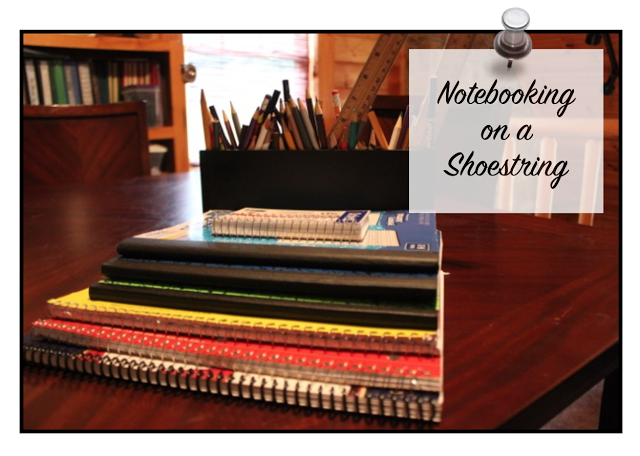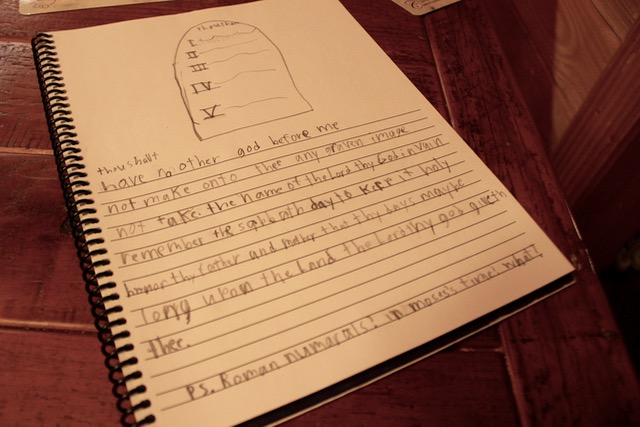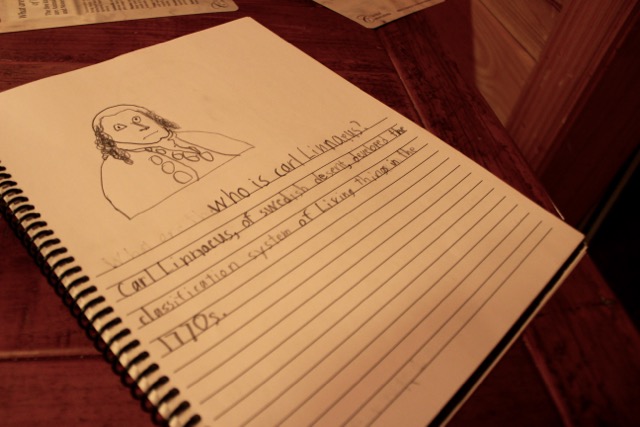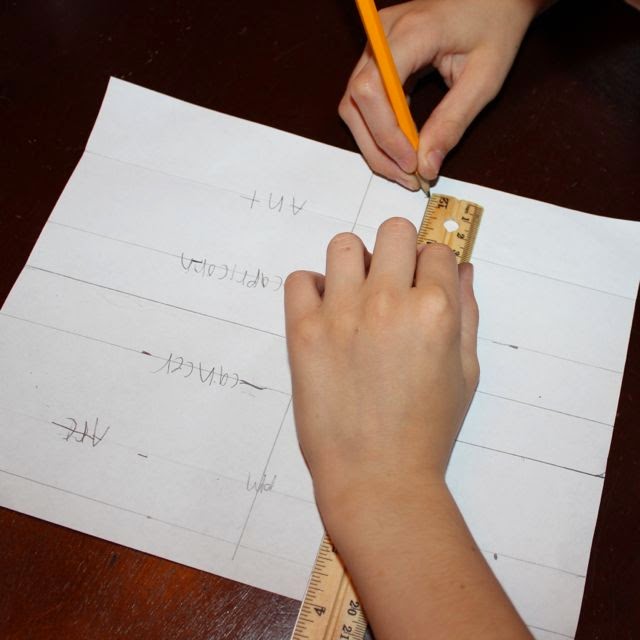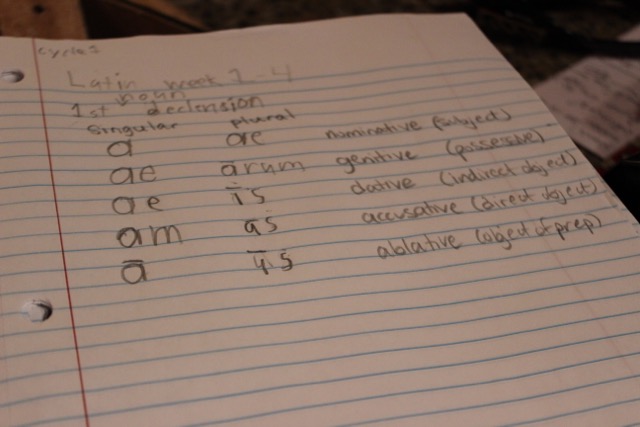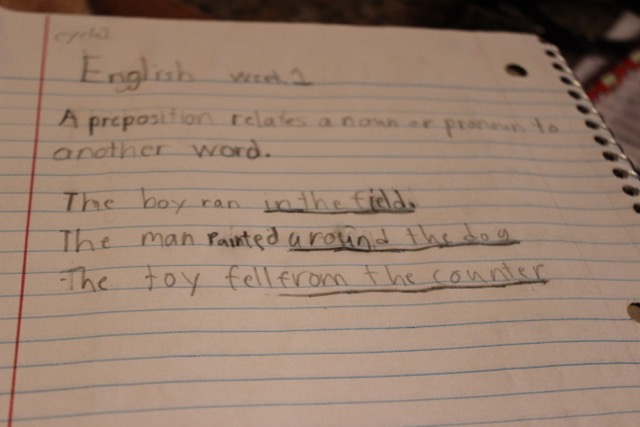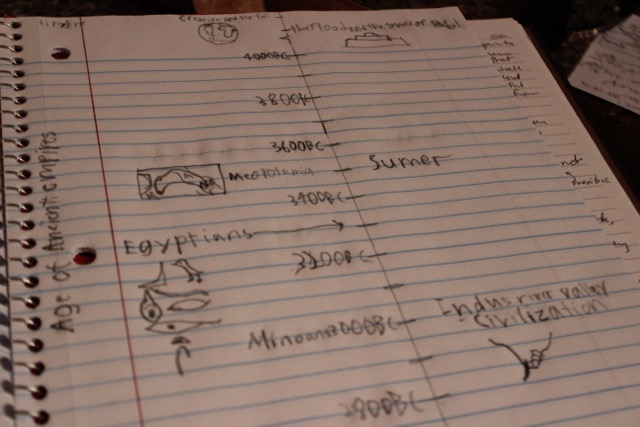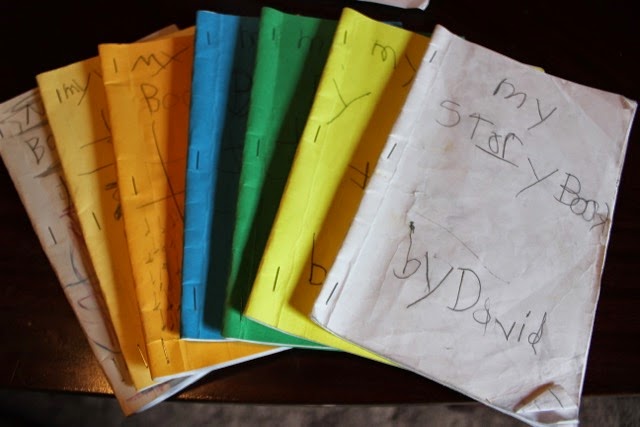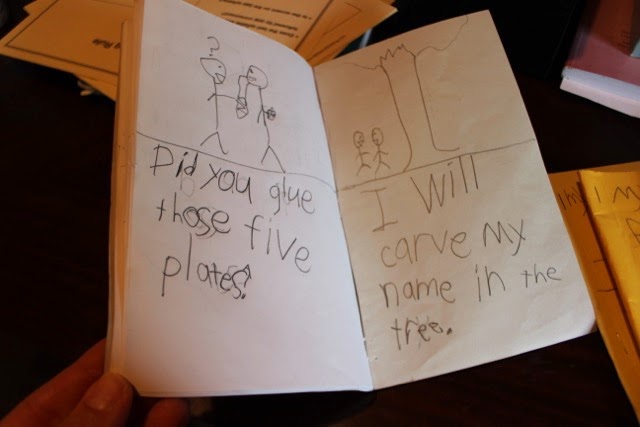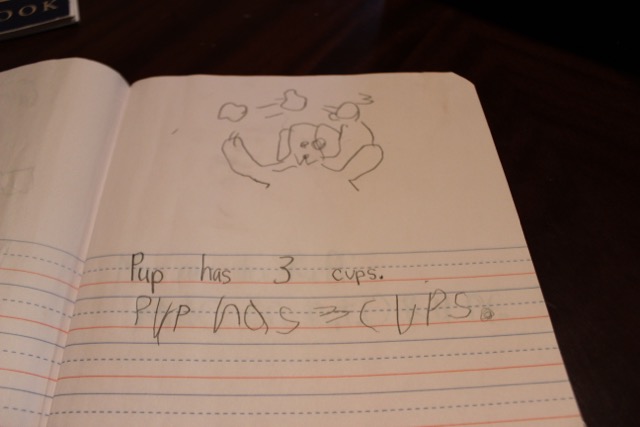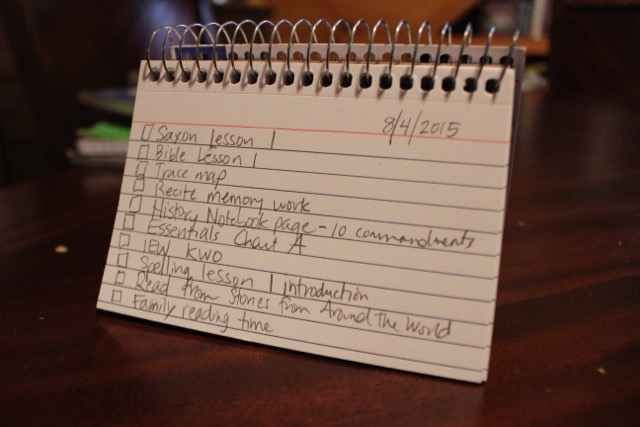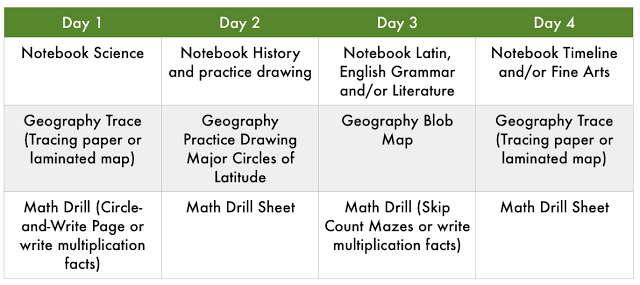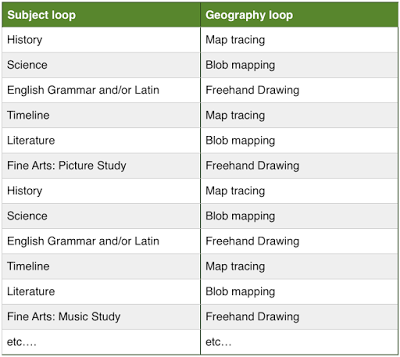As we prepare for a new school year, can I take a moment to share what I’ve not been doing? (Actually, there’s a lot I’ve not been doing…)
I’ve not been thinking much about paper, printables, and organization of papers and printables. I’m afraid I just can’t bring myself to battle the paper wars in preparation for a new school year. (To be honest, I still have unused printables from past years stored in boxes sitting in the closet. I’m not sure why I’m even keeping them.)
While printables can be a great tool for motivating our children, there’s been a gradual decrease in the use of printables in our home. I can’t seem to get my thoughts together in advance enough to remember to print out new notebooking pages, much less organize them. Herein lies that important homeschooling concept of simpler is better. This whole process of shedding unnecessities will likely take a lifetime, but I am learning.
Regardless of whether or not I’ve created them, it’s not necessary to have a printable for everything (or for anything, really). In fact, a few spiral or composition notebooks can do the job of half-a-hundred thousand printables. It costs a lot less, too. (BUT… if you still enjoy using printables or worksheets, that is a-okay! It’s a great tool! You can use what you and your children enjoy! This post is just to show you another way if you are seeking another way that makes planning and preparation a tad bit easier for our family.)
Notebooking Simplified
Seven Subjects (plus or minus a few).
Seven Spiral or Composition Notebooks (or just one or two).
Some blank paper or tracing paper (for geography and fine arts).
Ruler.
Pencil.
Note: There are many other (and better?) ways to use notebooks. This is just one example of how notebooks can simplify homeschooling. We don’t notebook through all the subjects in this manner, but we wanted to show how you could if you desired to do so. We practice mapmaking on a consistent basis and use notebooks for daily language arts work; on a weekly basis we will usually complete a history, science, and/or nature study page. For the other subjects, we use whiteboards or index-card flashcards to practice memory work.
History, Bible, and Science. Creating a notebook page for Bible, history, or science might include…
- Simply copying memory work verbatim
- Copying information related to history memory work (from a book like Story of the World or The Mystery of History or Pages of History)
- Writing a paragraph from a Key Word Outline (as we do in IEW History-Based Writing Lessons)
- Writing a written narration from the historical fiction or other reading that your family is doing
- Recording a science experiment or nature study observation
…or any number of other relevant writing. Our children enjoy drawing something related to the history or science memory work (or even drawing a cartoon of the memory work), so we use a spiral notebook that has an illustration area at the top. You can also find several types of Mead Composition books on Amazon. (Click here for a wide-ruled notebook with illustration section at the top of each page. Click here for a college-ruled notebook with graph section at the top.)
Geography. With geography, we rotate through the following tasks: Tracing, blob mapping, and freehand drawing with major circles of latitude. It is also the one subject where the printable has been extremely valuable for us. (We have actually laminated our blob mapping templates so that it’s not something we have to print over and over. No laminator? Page protectors function in much the same way.)
For more details on each of these, visit Blob Mapping and Drawing the World Free-Hand.
Latin & English Grammar. Instead of copying the charts and sentence task analysis sheets from our English grammar curriculum, we use a spiral notebook (for hard copies) or whiteboard (for extra practice). So. much. easier. English Grammar memory work and Latin noun & verb endings lend themselves to whiteboard practice. In fact, whiteboards are the tool we normally use to practice these subjects, but below is an example of how you might notebook ’em.
With more advanced students, you can start applying Latin noun or verb endings to various Latin stems.
Math. Math fact practice in our home involves flashcards, card games, math drills (as provided in our math curriculum), and writing of math facts. When we get to unit conversions, geometry, and algebraic laws, it is still helpful to simply write and draw what it means. (Example: For liquid equivalents, it’s helpful to draw out Gallon Man.)
Timeline. This takes just a little bit of forethought because your child has to choose a scale for the timeline. As I mentioned in our Accordion Timeline Notebooking post, you will likely want to adjust your timeline increments to allow for more events as you approach the present day.
That’s seven (or eight) subjects, and those seven (or eight) subjects constitute our normal daily memory work. However, those are not the only subjects for which we use this simple technique of writing-on-paper. For instance, there’s art and composer study. While it can be useful to have a printable with staff lines for music theory study, or a notebook page with a composer’s portrait or an artist’s work (especially if you don’t have the artwork available in another form), you can still use plain paper to write about an artist’s biography or to trace an artist’s work. In listening to classical music, our children simply draw what they hear on a blank sheet of paper as we talk about instrumentation and dynamics. We also have the other language arts (literature, vocabulary, and spelling), all of which can be included in the same notebook. In fact, keeping a literature notebook is a great way to keep up with characters, setting, quotes, and other elements of a story.
Sometimes, our son’s spelling and dictation assignments look like this:
or this:
It’s always amazing to me what they come up with when they are given a blank sheet of paper and a pencil! Finally, for our kindergartner last year, “other language arts” was simply some sort of copywork. I only include this to show how easy it is to incorporate copywork and notebooking into your school activities even with young children. For more about copywork, dictation, and note booking, visit Copywork, Dictation, Narration & Observation: A Beginner’s Guide.
Using a Notebook for Daily Tasks
Then there’s the very act of writing down the student’s daily assignments, which can be done on spiral notebooks as well. (We use a spiral index card notebook because my children like it, but it makes better sense to use cheap spiral notebooks that provide you an entire page to write out details.) In preparation for a new day, I usually plan out the next day’s activities for each of my children. Using a few minutes the night before to plan out the following day falls in line with the idea of starting your day in the evening. (“The evening and the morning were the first day.” Genesis 1:5)
Maybe it’s because I’m not a morning person, but it definitely helps me to have everything in place when we wake up first thing in the morning. The boys know what it is expected of them and can work through the checklist. I don’t have to think so early before I’ve had my first pot of coffee, and no questions are asked about when they will be finished. (The above is an example because I just now decided to start using index cards for this instead of writing it down on the whiteboard each night.)
Scheduling Notebooking
As far as notebooking is concerned, you don’t need to do every subject every day! (In fact, I would highly recommend not doing every subject every day!) Just cycle through them in a way that allows you to review the subjects. As an example for the schedulers…
As an example for the loop schedulers…
The loop schedule allows you to cycle through the tasks you’d like to do without worrying about totally missing out on “Fine Arts Friday,” for example. If you don’t get around to fine arts on Friday, just do it on Monday. Even though I have plans scheduled into our planner, we often fall “behind schedule” because of illness, drama rehearsals, field trips, dentist appointments, or Distractible Mom Syndrome. In this case, we just pick up where we left off the next day and don’t worry about not getting it finished on a particular day. If this loop scheduling thing is of interest to you, be sure to visit this post which explains it in further detail.
Total notebooking time usually takes less than 30 minutes for our family. You can do two or three subjects in a day, or just one. It just depends on what fits your family’s homeschooling rhythm.
So there you have it.
No costly subscriptions.
No expensive toner or printer cartridges.
No remembering to print something out.
No spending a day (or days) printing, filing, and organizing weeks of printables.
Just pencil and paper.
You know, I might have saved our family quite a few toner cartridges if I had only recognized the beauty in simplifying our notebooking earlier in our homeschooling journey…
Other related posts:
Our Classical Notebook (for those who still would like notebooking pages, here are some free ones!)
Copywork, Dictation, Narration & Observation: A Beginner’s Guide
Drawing the World Free-Hand: Major Circles of Latitude
Continental Blob Maps
Amazon links are affiliate links. When you use an affiliate link to shop, Amazon provides a small commission to me at no charge to you. You don’t have to use my affiliate links, but if you do, thanks a whole bunch! It supports the continued operation of this website!

